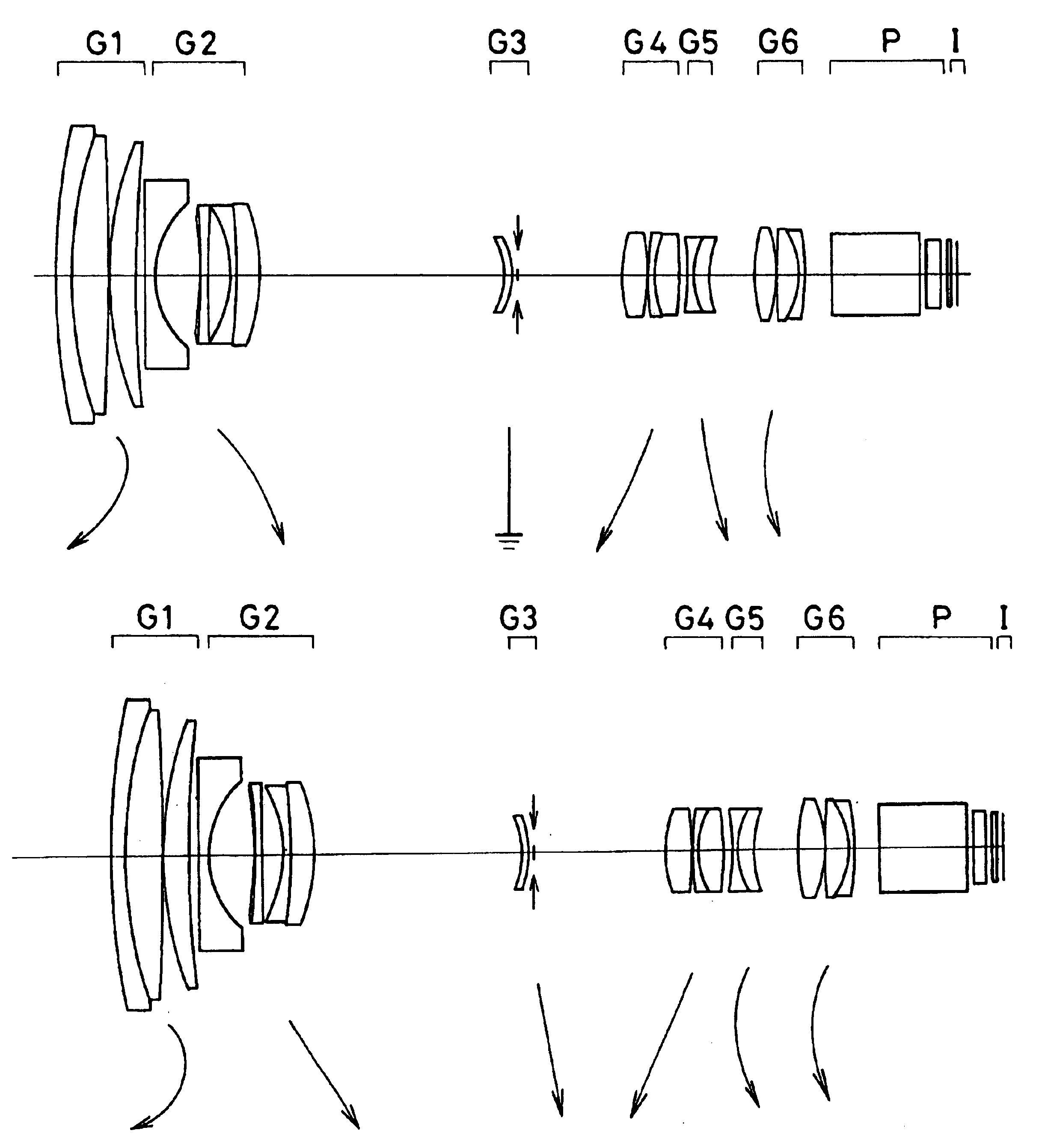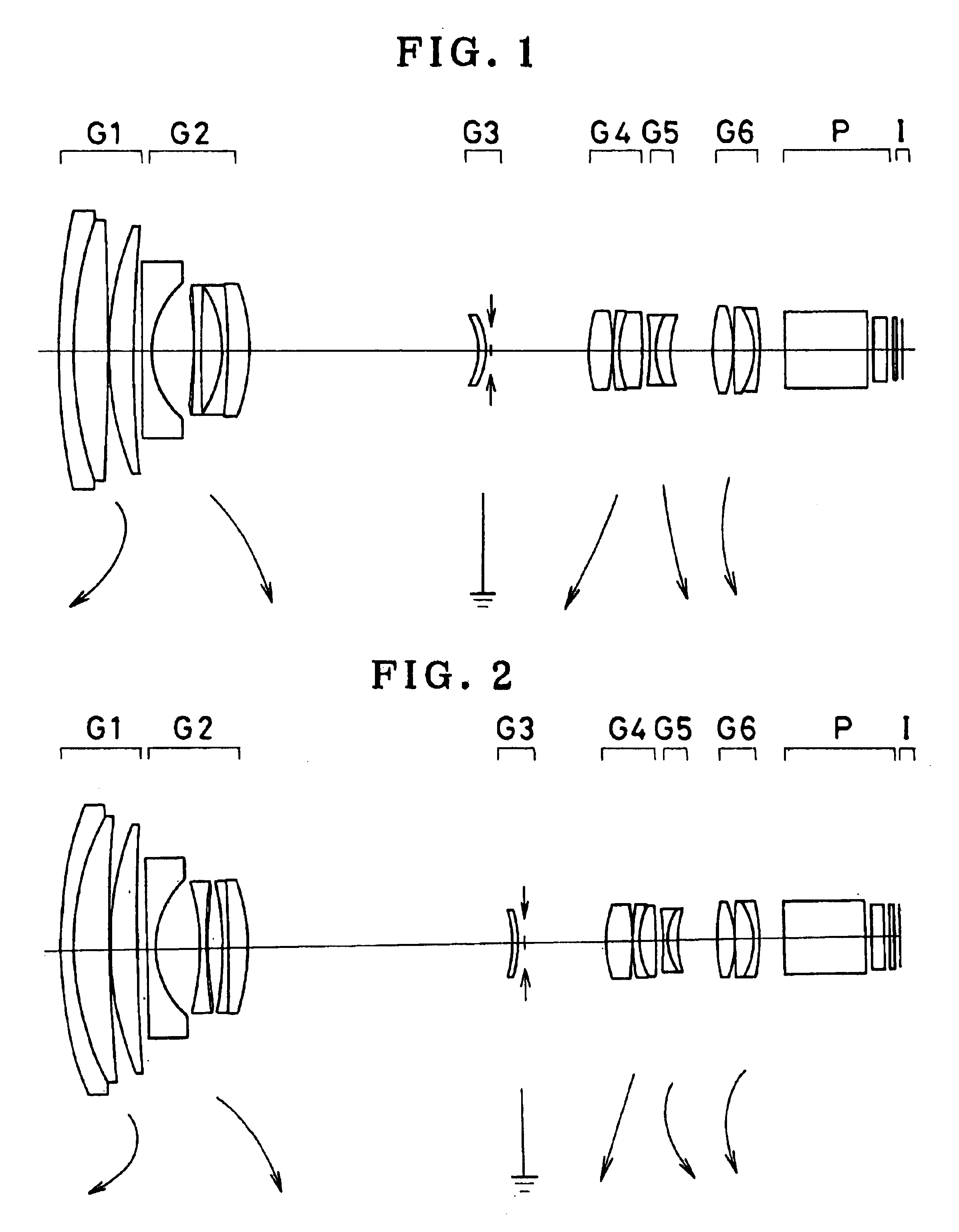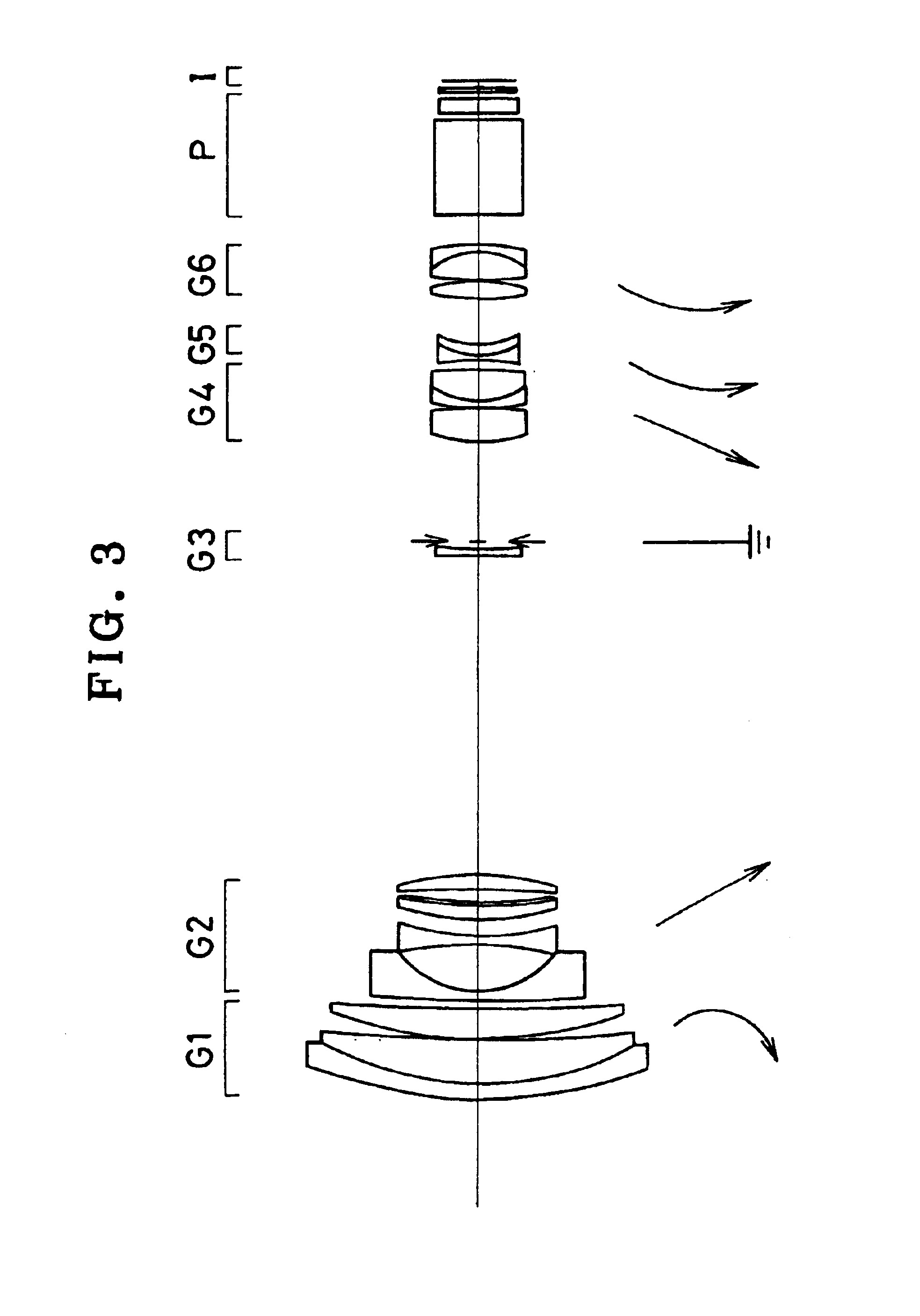Zoom lens
a zoom lens and wide angle technology, applied in the field of wide angle, can solve the problems of high zoom lens ratio, little known, etc., and achieve the effects of high image-formation capability, improved results, and effective use of image quality
- Summary
- Abstract
- Description
- Claims
- Application Information
AI Technical Summary
Benefits of technology
Problems solved by technology
Method used
Image
Examples
example 1
Aspherical Coefficients
9 th surface
K=0
A.sub.4 =2.1263.times.10.sup.-5
A.sub.6 =1.5727.times.10.sup.-8
A.sub.8 =3.9610.times.10.sup.-11
A.sub.10 =0.0000
18 th surface
K=0
A.sub.4 =-1.9875.times.10.sup.-5
A.sub.6 =-1.3029.times.10.sup.-8
A.sub.8 =5.1888.times.10.sup.-11
A.sub.10 =0.0000
26 th surface
K=0
A.sub.4 =-1.7061.times.10.sup.-5
A.sub.6 =-8.7539.times.10.sup.-9
A.sub.8 =1.1345.times.10.sup.-10
A.sub.10 =0.0000
Zooming Data (.infin.)
example 2
Aspherical Coefficients
11 th surface
K=0
A.sub.4 =-2.3956.times.10.sup.-5
A.sub.6 =1.1363.times.10.sup.-8
A.sub.8 =-2.9304.times.10.sup.-11
A.sub.10 =0.0000
18 th surface
K=0
A.sub.4 =-1.9310.times.10.sup.-5
A.sub.6 =-5.6603.times.10.sup.-9
A.sub.8 =-5.6829.times.10.sup.-11
A.sub.10 =0.0000
26 th surface
K=0
A.sub.4 =-1.9084.times.10.sup.-5
A.sub.6 =8.1108.times.10.sup.-9
A.sub.8 =2.2527.times.10.sup.-10
A.sub.10 =0.0000
Zooming Data (.infin.)
example 3
Aspherical Coefficients
13 th surface
K=0
A.sub.4 =-1.4437.times.10.sup.-5
A.sub.6 =2.9795.times.10.sup.-9
A.sub.8 =-9.7997.times.10.sup.-12
A.sub.10 =0.0000
19 th surface
K=0
A.sub.4 -1.9829.times.10.sup.-5
A.sub.6 =-1.2490.times.10.sup.-9
A.sub.8 =9.5912.times.10.sup.-12
A.sub.10 =0.0000
28 th surface
K=0
A.sub.4 =-8.0968.times.10.sup.-6
A.sub.6 =-1.4115.times.10.sup.-8
A.sub.8 =-3.7788.times.10.sup.-10
A.sub.10 =0.0000
Zooming Data (.infin.)
PUM
 Login to View More
Login to View More Abstract
Description
Claims
Application Information
 Login to View More
Login to View More - R&D
- Intellectual Property
- Life Sciences
- Materials
- Tech Scout
- Unparalleled Data Quality
- Higher Quality Content
- 60% Fewer Hallucinations
Browse by: Latest US Patents, China's latest patents, Technical Efficacy Thesaurus, Application Domain, Technology Topic, Popular Technical Reports.
© 2025 PatSnap. All rights reserved.Legal|Privacy policy|Modern Slavery Act Transparency Statement|Sitemap|About US| Contact US: help@patsnap.com



